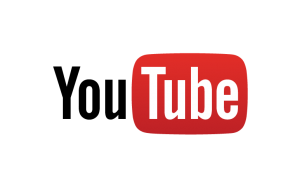
 Last week I gave an overview of various social media roles. Over the next few weeks, I’m going to go more in-depth on these roles and how they affect time management and platforms used.
Last week I gave an overview of various social media roles. Over the next few weeks, I’m going to go more in-depth on these roles and how they affect time management and platforms used.
Let’s start with becoming the go-to person for good content. There are two ways to act in this role. One is to be a Content Creator. The other is to be a Content Filter. I’ll cover Content Creator today and Filter next week.
Let’s start with why you might want to fill the Content Creator role in social media. Probably you want to be known as an original thinker in your field. Or you might want to write a book, and you want to use social media as a way to build content and a future audience. Perhaps you are a free-lance writer or consultant and want to build credibility with your future clients. All of these are good reasons to be a Content Creator.
Where do Content Creators promote themselves in social media? A blog is the obvious place to start. A blog provides a foundation for all other interaction. Much of your time in social media is aimed at driving people to your blog so they can read and share in your content.
By the way, that blog doesn’t have to be written. A video blog or podcast are good options as well, depending on what content you are promoting. Are you a writer? A written blog is essential. Are you a trainer or speaker? A video blog or podcast might promote you more effectively.
Once you’ve set up your blog and decided on the format, what other forms of social media are going to work well to promote the blog? I’m a fan of Twitter or Google+ for blog promotion. Both have great tools for promoting outside of your immediate contact sphere.
While Facebook has a share function, recent algorithm changes make it harder for people to see your content in their Home Feed. Facebook can be excellent for maintaining close relationships. It’s not quite as good at promoting, with one exception. If you are willing to pay a little bit per post and want to target your content to specific types of people, Facebook has some crazy good paid targeting options.
 If you are doing a video blog, YouTube is required. It’s a good place to host the video, and it has excellent search functionality. With the ease of liking or reviewing a video and the tracking of times the video has been watched, it’s a good platform for promoting your content.
If you are doing a video blog, YouTube is required. It’s a good place to host the video, and it has excellent search functionality. With the ease of liking or reviewing a video and the tracking of times the video has been watched, it’s a good platform for promoting your content.
So most likely, you’ll have your blog on a schedule, and you’ll be using YouTube and/or Twitter to promote your posts. Where does this leave you from a time management perspective?
Obviously, you’ll need to allocate time to write or film your content. For most of you, this will probably be your biggest time commitment. The rest of your time will be monitoring your blog for comments, and the various channels you use to promote for shares, comments and reviews.
In addition to monitoring, you need to be engaging with your followers. Perhaps someone in your field has written a related blog post? You can comment on it and link to it. This allows you to engage with other writers in your field and promote them. What goes around comes around. If you promote them, they will likely promote you in return. Over time, you can build a close relationship with your audience and other influential people in your field.
How does this get you business? If you are selling a book or tele-series, your blog allows people to get a feel for who you are and if they might be interested in paying for your content. If you’re a speaker, people can see your style before they book you. Consultants and other professional service providers can build a reputation as a go-to person in their field. Once you are known as the go-to person, people use and refer you.
Does any of this sound like you? If so, great. Now you know where to start. If not, don’t worry. I’m going to cover several other roles over the next few weeks.
Tune in next week for Content Curator, the flip-side of Content Creators.
Pingback: Social Media Roles: Be a Content Curator()